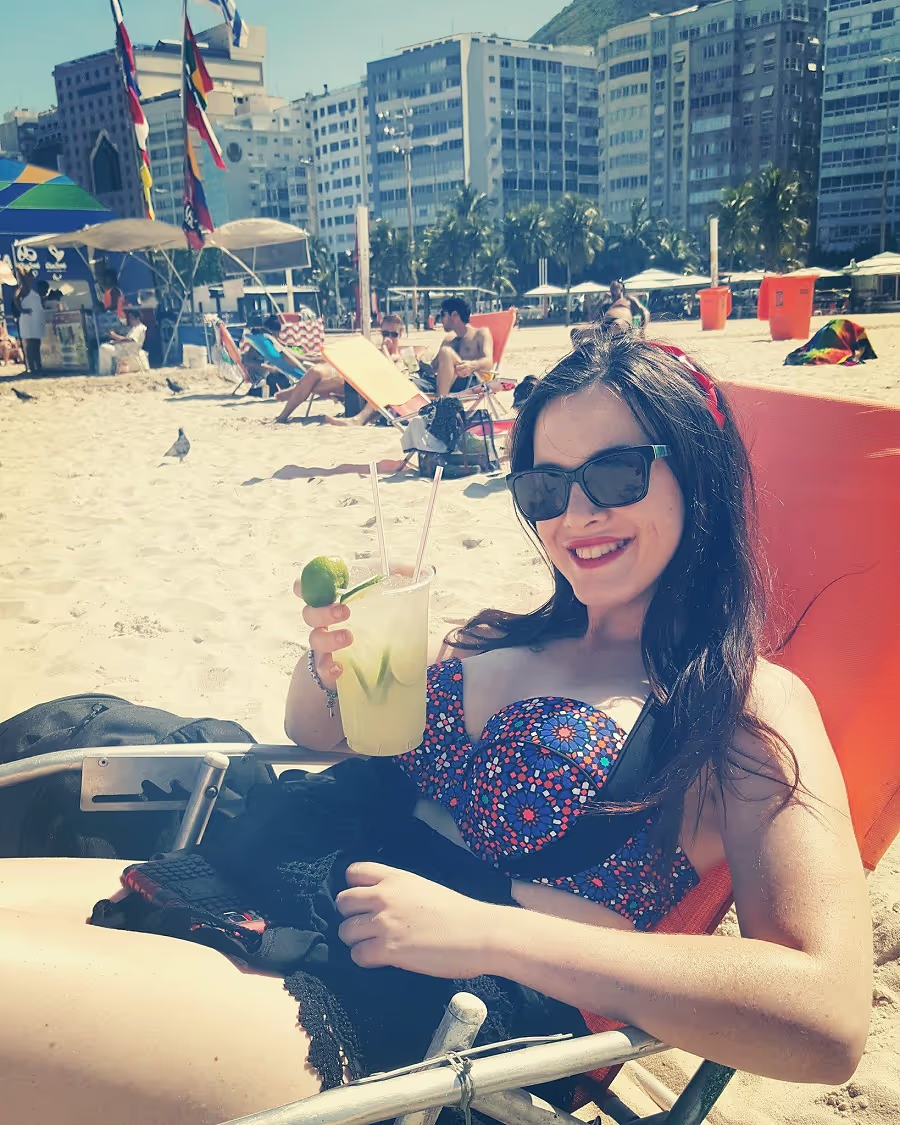Travelling Brazil With Type 1 Diabetes
Brazil is an amazing country, filled with wonderful people, food, alcohol, samba and sights to see. To help make your trip easier, I've put together some advice and tips on travelling Brazil with type 1 diabetes.

I visited Brazil just after I had graduated University and I spent around three weeks making my way up the coast to reach the amazon rainforest, a trip that has been on my bucket list since I watched David Attenborough shows in Geography lessons. I had a wonderful time in Brazil and seen and did some amazing things, from visiting the famous Christ the Redeemer in Rio de Janeiro, to learning how to dance samba at a local samba club, to camping in the Amazon rainforest surrounded by howler monkeys and a lot of mosquitoes.
Brazil isn’t as well-developed as other countries in the world, and there are some new challenges that will test your diabetes. To help ensure your trip to Brazil is just as amazing as mine, I’ve put together this personal guide on travelling Brazil with type 1 diabetes. This guide is filled with everything that could present a challenge to diabetes management and how to deal with it, alongside useful tips, tricks and contact numbers I had to help me along the way.
If you’ve already got my eBook on the “The Ultimate Guide To Travelling with Type 1 Diabetes”, then you will already be prepared for your trip and all the possible things that could happen. Now it’s time to get specific and dive into what life is like with diabetes in Brazil!
What challenges does Brazil present to type 1 diabetes?
The main things you need to be concerned about are:
- The heat and how it can impact your blood sugars and insulin
- The new food and drinks
- The activities
How to Navigate Rio De Janeiro With Type 1 Diabetes

Rio is a place bursting with life and culture and it’s super safe if you take normal precautions. This was the first stop on my trip to South America, so my first attempt at dealing with the different issues Brazil could bring to diabetes management. Let’s have a look at the possible scenarios and how I dealt with them, and how you can too.
The Heat
Brazil is hot hot hot! So if you are coming from a cold country (I came from Ireland!), or even a warmish country, Brazil is going to be a shock to your system, and possibly your blood sugars.
It’s normal to start experiencing hypos. I found I needed half the amount of insulin as I normally would in the Brazilian heat. But always start by reducing your insulin requirements by around 10 % and keep a close eye on them to see if that works. If you still find you are dropping into hypo, then reduce it further and keep going until you find a balance.
On insulin pumps this can easily be achieved via a temporary basal rate. If you are unsure how to use one of these, check your pump manual, or ask your diabetes doctor for advice.
On insulin pens: If you are spending days in the heat then begin by reducing your background insulin by 10 % until you find something that suits you. When you are taking fast-acting insulin, such as your humalog, reduce this by 10% also, then go from there.
Always carry hypo supplies with you and small change in case you need more. The good news in the beaches of Brazil are filled with vendors selling ice lollies and smoothies for cheap. A hypos dream!
Once you’ve found a balance, you will notice your hypos will reduce and you can use your new insulin requirements as a base for handling similar temperatures in other destinations.
The Sightseeing
Brazil has lots of amazing sights to see and some of them require a significant amount of walking. When we combine walking with the heat, that requires an even further reduction in the amount of insulin we need.

Trips to Sugar Loaf and Christ the Redeemer can be achieved via metro and buses, and of course cable car. So, you shouldn’t have too much difficulty with the heat. That is unless you decide to skip the bus up to Christ the Redeemer and walk. This is a high incline walk since the statue is located on a mountain. So you will need to take all the necessary precautions for walking, and hiking with diabetes.
If you find yourself chilling on the famous beach, then make sure you are aware even sitting in the heat can bring your blood sugars down, so reduce your insulin. After your first or second day in Brazil, you will start noticing patterns to help you adjust your insulin rates.
If you decide to go to the Tijuca National Park, there are lots of different hikes you can do. There isn't really any shade to hide from, so you will need to prepare for hypos and ensure you bring lots of supplies or reduce your insulin or basal rates. There are different levels of hikes you can do, and there is a little map at the entrance explaining the different types. So choose your walk based on your blood sugars, supplies and fitness level. BRING LOTS OF WATER!
The Food and Drinks
Food in Brazil is amazing. If you are travelling to Brazil on a budget then you will probably be consuming a lot of street food. Some common foods in Brazil include:
- BBQ meats are a big thing
- Sea food such as prawns and
- Pão de Queijo (Brazilian Cheese Bread)
- Grilled cheese (this is also commonly a beach food)
- Hot dogs. Mini hot dogs are not in short supply in Brazil. We are talking around 50 pence and they are really really delicious.
- Sweet corn is commonly sold too
- Fruit is sold on stalls for great value as well as fruit smoothies (perfect for hypos!)
Drinks include beer, cachaca, and the national cocktail, Caipirinha. The national cocktail is full of sugar, and requires some careful planning. Never give the full amount of insulin, especially if you are enjoying the Brazilian sunshine. In my new online course and eBook I've got a whole guide on managing alcohol and carbs including an alcohol carb sheet! It may be useful in this situation!

If you want to go low carb in Brazil then you won't have too many issues- yes rice is a common dish, but just ask for dishes without rice. Fill up on meets, cheese and seafoods.
Don't forget that due to the heat, you're probably going to need to reduce your insulin anyway, so if you want to use that as an excuse to eat some carbs then do so!
General tips
- I would invest in a Medangel One sensor as the heat is a real threat in Brazil and this can help you, particularly if you decide to go to camp in the Amazon, or do a riverboat Amazon cruise.
- Bring your Frio bag with you to keep your insulin cool (you get 20% off with our new eBook!)
- Wear medical ID, definitely if you are going clubbing in Rio!
- Wear a travel bra, or some sort of pump waist band or underwear to keep your insulin pump cool. Overheating is a challenge.
- Different time zone. Remember if you are traveling with an insulin pump you will need to switch your time zone once you land by just updating the time on your pump. If you notice any changes in your blood sugars,then you should perform basal rate checks to update them. For a full guide on switching time zones with insulin pens, please check out the section in your eBook! It's full of advice and specific examples!
- Different insulins: Syringes that are available in Brazil, are U-100, U-50 and U-30 syringes,in the UK the vast majority of insulin in the is U-100 insulin. So, if you need to take a different strength of insulin, say in an emergency, it’s important that you use the correct device and syringes for that insulin.
- For example, for U-40 insulin you would use a U-40 syringe. Always ask your doctor for advice if you are confused.
- If you are in the USA, you will probably be okay!
- Ensure you have comprehensive medical/travel insurance when you are in Brazil. You won't have access to "free" health care, but you can access insulin in an emergency, but you need to pay for this and then claim it back on your insurance. Always get a minimum of 10 million medical cover when abroad. You can buy insulin in a pharmacy.
You can get discounts to everything I've mentioned above with the new eBook.



Leave a comment
Let us know what you think!